Huriyyah Dhanse, Vice President Customer at Fresh Relevance was joined by Janis Thomas, eCommerce and marketing director at Look Fabulous Forever, to discuss 7 key challenges the beauty industry faces, and how to solve them.
If you missed the webinar, you can catch-up on demand. In the meantime, here’s a run down of the 7 key challenges and solutions to help eCommerce beauty businesses succeed.
Converting first time customers
When it comes to beauty brands, a lot of the focus the past few years, specifically pre-pandemic, used to be on face-to-face experiences. Customers could try on sample products and even book consultations with in-store staff to help them find out what colors suit them and what products to use, etc.
But the pandemic has changed everything, with more and more shoppers and businesses moving online. So, how could they create brand awareness and convince shoppers to convert?
Data capture popovers
These types of popovers collect potential customers’ data such as email addresses, and are most effective when they pop up based on the behavior of the consumer visiting your website. The timing and context are vital, and the content on the popover itself must fit your brand and speak to your customers in a way that engages them.
Examples for popovers can be welcome popovers (like the Urban Decay one below), exit intent popovers… The list goes on. It’s a good idea to test which ones are most effective for your business, as not every customer will react the same way.
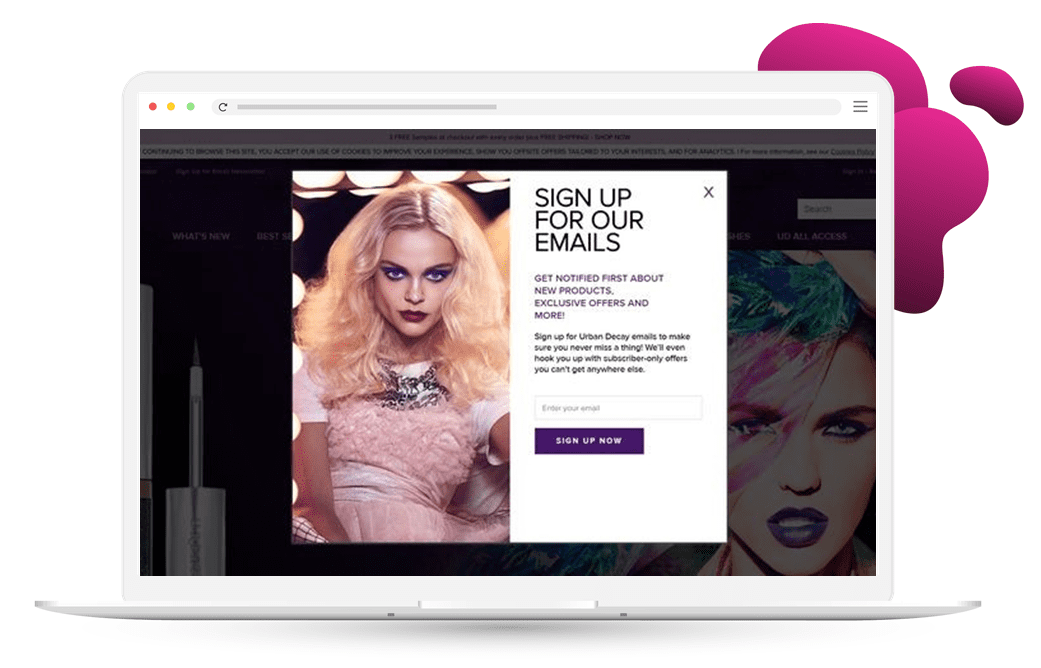 Source: urbandecay.co.uk
Source: urbandecay.co.uk
Gamification
Gamification is another great tactic to gather zero-party data from your customers, whilst also being great for conversion rates. Customers will be more willing to share their data and make a purchase if the experience is fun. Below is an example from Living Royal.

Source: livingroyal.com
Dynamic delivery banner
Create a sense of urgency using a countdown timer for delivery, effectively engaging consumers, as Molton Brown has done below. This will shorten the buyer’s cycle and make shoppers more likely to buy from you, as they are less likely to spend a long time thinking about making a purchase (and subsequently forgetting about it).
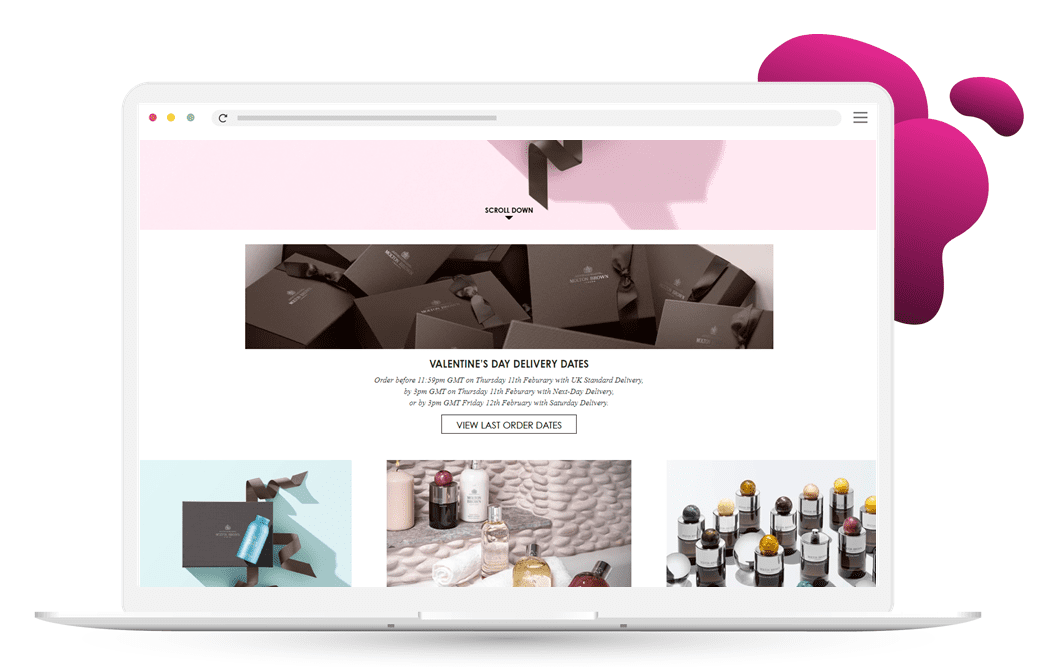 Source: moltonbrown.co.uk
Source: moltonbrown.co.uk
Popular items
Using trending product recommendations can leverage that Fear Of Missing Out (FOMO) and encourage customers to buy from you. Customers tend to listen to the wisdom of the crowd, and if the majority of the crowd buy specific products from you, the customer will be more likely to buy them, too.
See below for an example from beauty brand Look Fabulous Forever, who also use social proof to help build that trust between them and their customers.
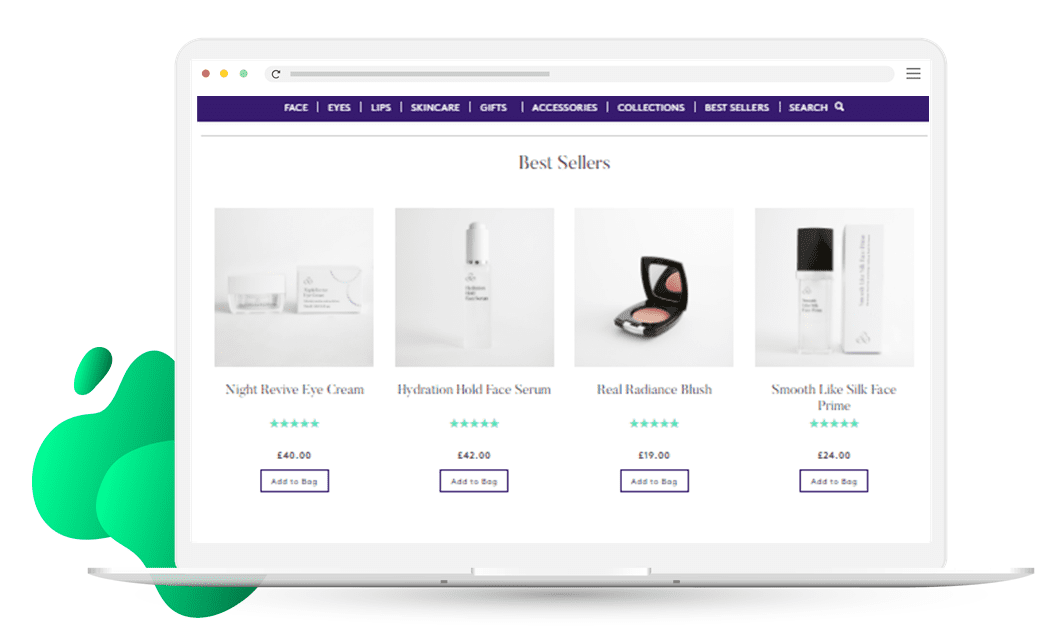
Source: lookfabulousforever.com
Beauty & cosmetics sector benchmark 2021
We have seen that 12% of our clients in this sector who include product recommendations found it worked really effectively for them, and that 19% saw a sales uplift once implementing personalization.
Re-engaging existing customers
So you’ve acquired new customers. How do you make sure that they continue buying from you? McKinsey’s survey found that 40% of customers were willing to change brands during the pandemic and shop around, so having a retention and loyalty strategy is more important than ever.
Loyalty program
Having a loyalty program in place is a great way to keep your target audience coming back. Make use of loyalty points, as Space NK does below, to give customers that incentive to make more purchases.
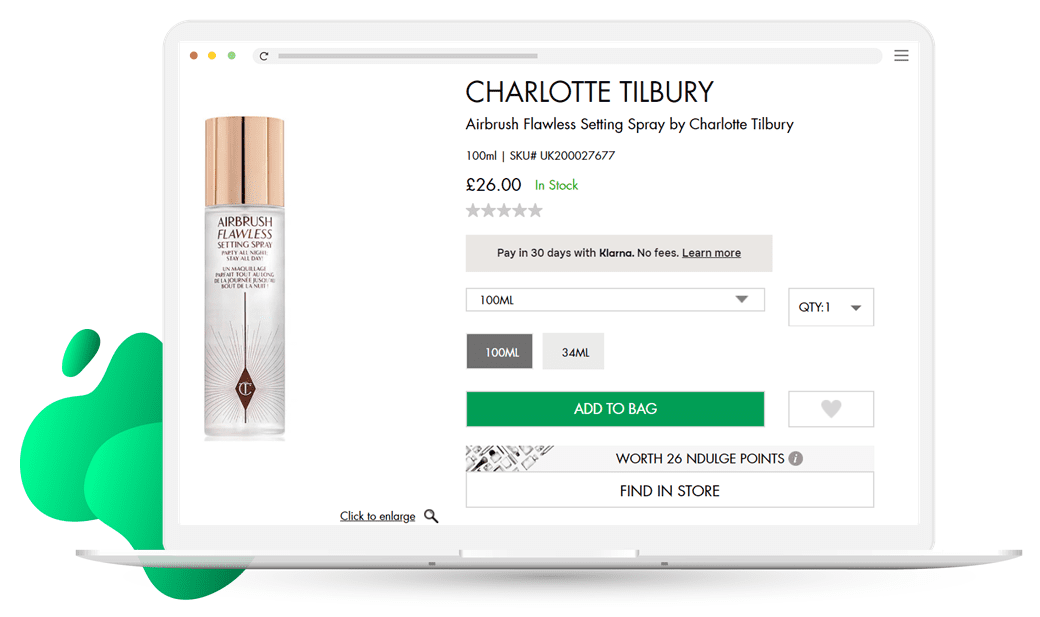
Source: SpaceNK.com
Abandonment emails
Email is one of the most valuable marketing channels and a great part of digital communication between you and your customers. You probably already have cart abandonment emails in place, but browse abandonment emails can uplift your sales even further. Both of them can also increase order value, so let’s take a look at an example below.
Look Fabulous Forever’s cart abandonment email makes use of personalized discounts within their marketing efforts, creating that extra incentive to come back and complete a purchase. The content is on-brand (“still thinking about it?”) and subtle rather than creepy, adhering to the brand voice originally created on the website.

Source: Look Fabulous Forever email
Post-purchase email
This type of triggered email helps create a sense of community between you and your customers. You could use this opportunity to create a guide on how to use certain products, recommend complementary products based on the recent purchase(s), or talk about the care for a specific product purchased. You can link to valuable content such as beauty blogs and video content that will help your customer in using your makeup and skincare. You could even invite the customer to leave you some feedback, like Soletrader has done below.

Source: Soletrader email
Dynamic coupons
Get more personalized with your coupons. The more personalized, the better, as this can build loyalty within your customer base. For example, offering coupons in your browse abandonment emails can increase the chance of conversion rates, as done by Beardbrand below.
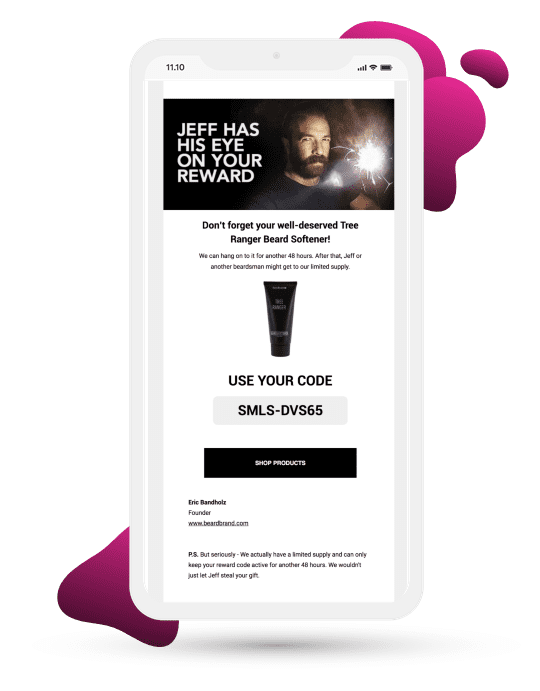
Source: Beardbrand email
Beauty & cosmetics sector benchmark 2021
Within our clients in the beauty brand sector, we have seen a 4% sales uplift in abandonment emails. The average ID rate amongst cart abandonment is currently sitting at 55%.
Understanding buyer affinities
Segmentation helps beauty retailers determine which price affinities, products, brands and categories convert your customers the most. You can even split-test your website to see which of these recommendation types work best for your brand.
Brand preferences
Within beauty marketing especially, customers usually already know which brands they like and want to buy. Being able to show other brands amongst the brands they usually buy in a clever way can help with encouraging them to increase order value or help with upselling.
Price affinity predictor
Fresh Relevance’s price affinity predictor tool is an effective way to reduce bounce rates. Without it, when new visitors come on your website, you have no way of knowing what price range they might be looking for. If you then show them things too unaffordable, or even too cheap, they might end up leaving your website. With this feature, though, you can show them products likely priced comfortably within their budget at the moment they arrive.
Boosting product discovery
As a business, you probably have a large catalogue of products – so many that to new customers, trying to find products they like can be overwhelming. Personalization is one of the key beauty content marketing strategies to help you show the customer exactly what they need, when they need it.
Frequently purchased products
Leverage that FOMO again and build excitement as Wet and Wild Beauty have done below. For optimized effectiveness, tailor it to your customers’ preferred categories.

Source: wetnwildbeauty.com
Personalized product recommendations
One of the best ways to increase product exposure is with personalized product recommendations. In the example below, Look Fabulous Forever recommends products under the header ‘You Might Also Like’, showing products that are likely to grab the customer’s attention based on their previous browsing history.

Source: lookfabulousforever.com
Doing this enhances the customer experience as the customer isn’t overwhelmed by choices and feels valued by the company because they can conveniently find the type of products they need.
Another personalized product recommendation you could use is complementary products, either on the product page or in post-purchase emails, which will help increase order value.
Homepage banner
Dynamic content is a vital part of personalization. By utilizing brand or category affinity in your homepage banner, you could increase conversion rates. Segmentation is important when it comes to showing customers exactly what they need to see, and Look Fabulous Forever know that. Below is an example of what new visitors see on their website.

Source: lookfabulousforever.com
A rotating banner is a great way to showcase even more of your products.
Building trust and community
Now that so much of retail, even in the beauty industry, is online, it is crucial to build that trust between you and your customers. Social proof is a great way to do this.
User-Generated Content (UGC)
Ease purchase anxiety with user-generated content. This is especially important for online makeup brands and skincare brands, as people want to see that these products look good and do what they need to do, and UGC can act as beauty inspiration. Knowing that other customers are satisfied with your products will help new buyers decide that your business is trustworthy enough to buy from.
Ratings and reviews
Ratings and reviews help build trust with the buyer. If many other customers rate your products highly, more new visitors will be likely to convert. This is especially crucial when people are not able to visit a showroom in person. They cannot try the product first-hand before buying, so they are going to trust the wisdom of the crowd instead. One of our clients saw a 59% increase in average order value just by showing star ratings next to each product!
As well as displaying ratings and reviews on your website, it’s also effective to add them to your emails, as Space NK have done below.
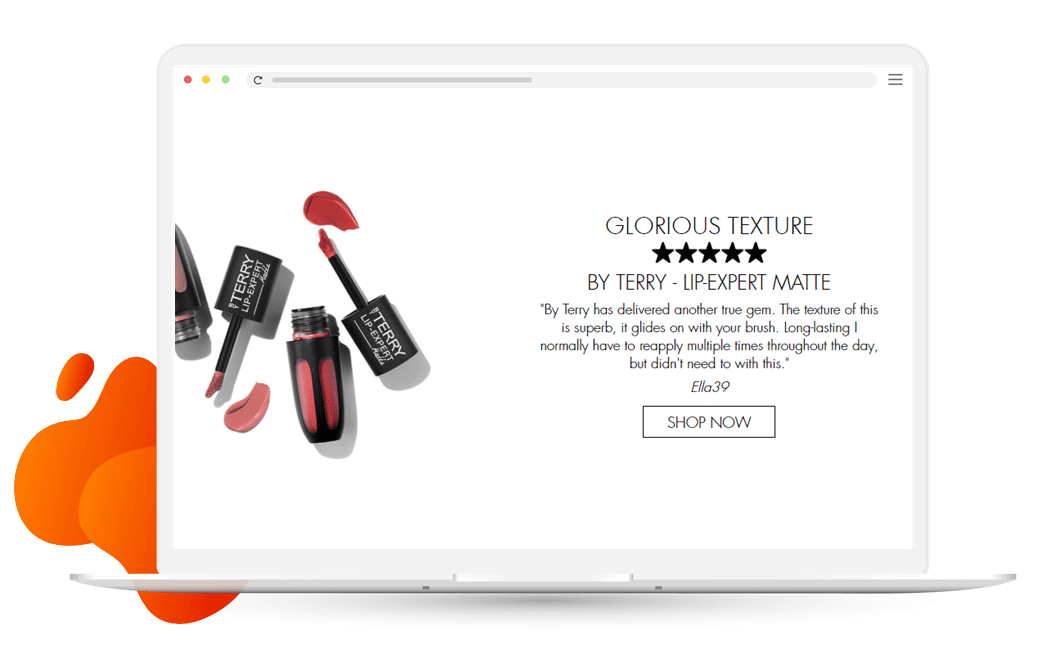
Source: Space NK email
Exclusive invites to in-store or online events
Our research shows that 15% of customers want exclusive invites as well as complementary services. Doing this can create an online (and offline!) community.
You could even use product affinities to offer early access to product launches for the customers who like those in that category or color specifically, or invite them to exclusive events based on the products they like.
Discover more insights into customer loyalty: The three Cs of customer loyalty – Fresh Relevance loyalty report.
Real-time content
With so much of the beauty industry being online now, customers want everything to be up-to-date, or they’ll likely leave your website. So how do you make sure they stay loyal amidst all this change?
Urgency/popularity messaging
By using urgency and popularity messaging, such as Glasses Direct does below, you are easing that purchase anxiety using the wisdom of the crowd, and you are leveraging that FOMO again. It is the equivalent of going into a brick and mortar store and seeing one item left in stock, or seeing a queue of people waiting outside the store for a single product.
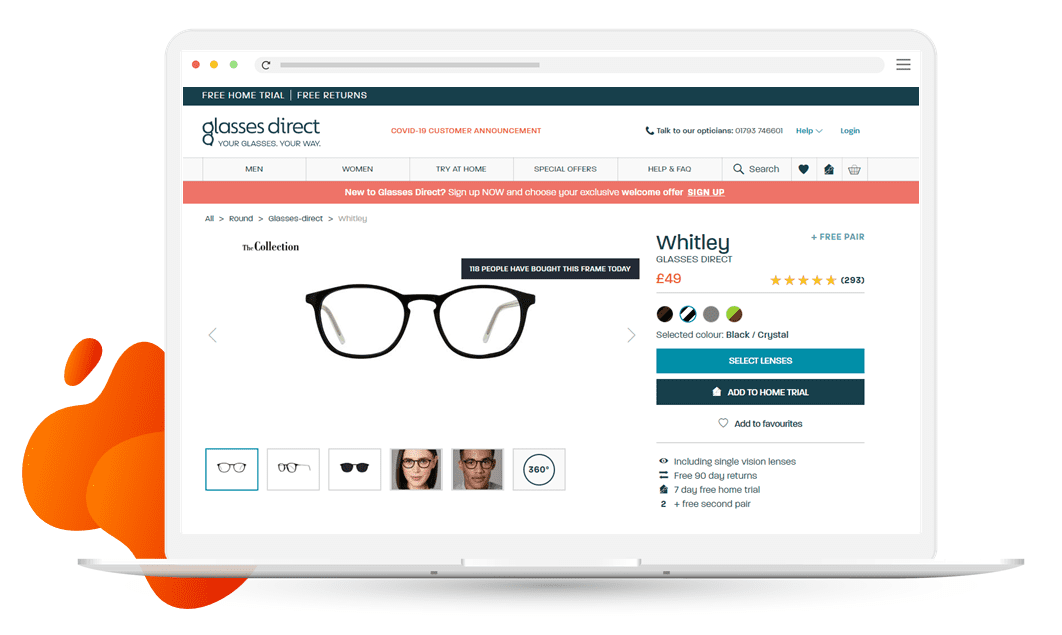
Source: glassesdirect.co.uk
You can also use countdown timers on your website counting down sales to increase the excitement, as Molton Brown has done below.
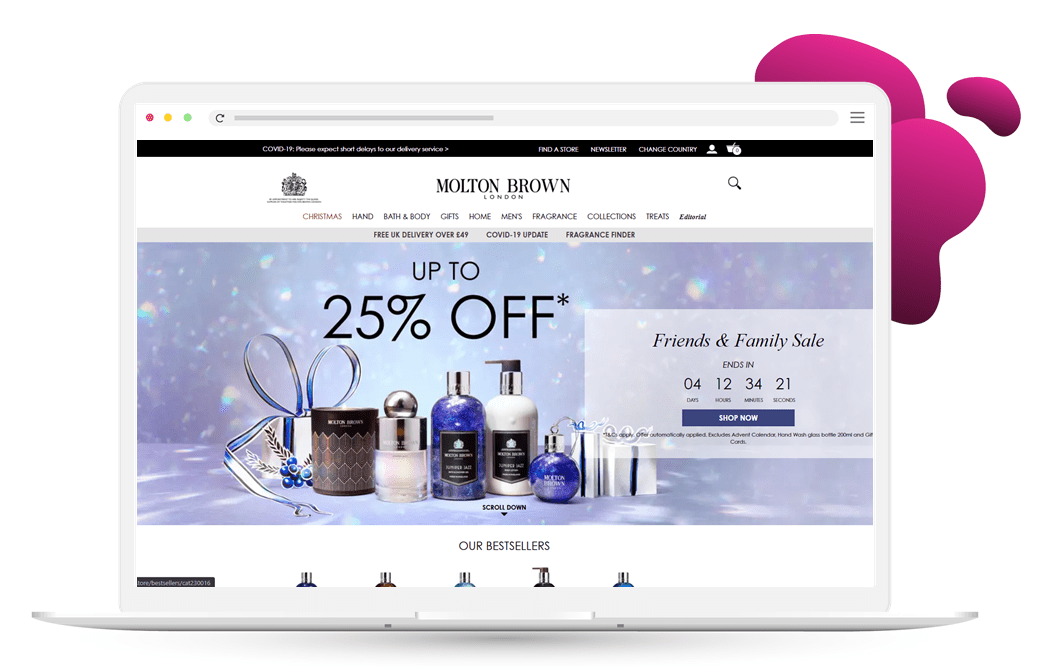
Source: moltonbrown.co.uk
Triggered emails
One type of triggered email you can use to enhance the customer experience is price drop alert emails. If a customer has been browsing a product but not bought it, it might be that the product just isn’t affordable for them. Sending this email to them can help convince them that yes, this time they can buy it, and they will. In the example below, Country Attire does exactly this, whilst also including recommendations based on the browsing behavior of the customer.
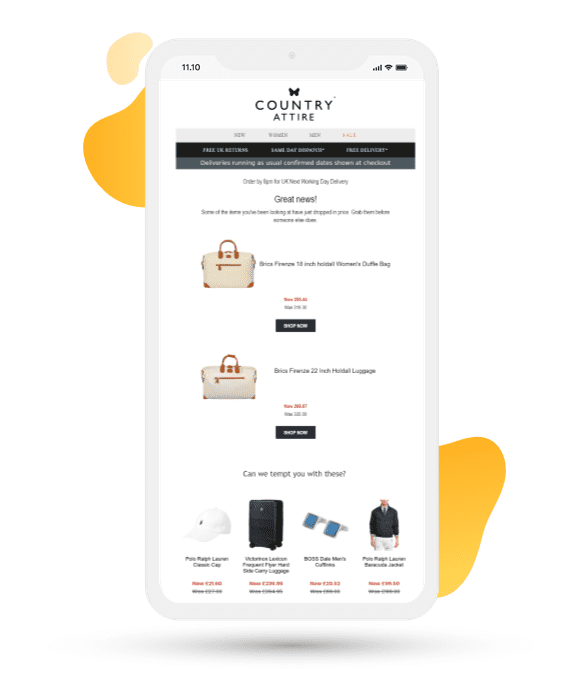
Source: Country Attire email
Another type of triggered email that can be useful for the customer and effective for brands are back in stock emails. This type of alert smooths out the customer journey because shoppers don’t have to keep checking the website to see if the product is available again, minimizing frustration.
In the example below, Molton Brown gives the customer the option to fill in their email address so that they can get notified when the product is back.
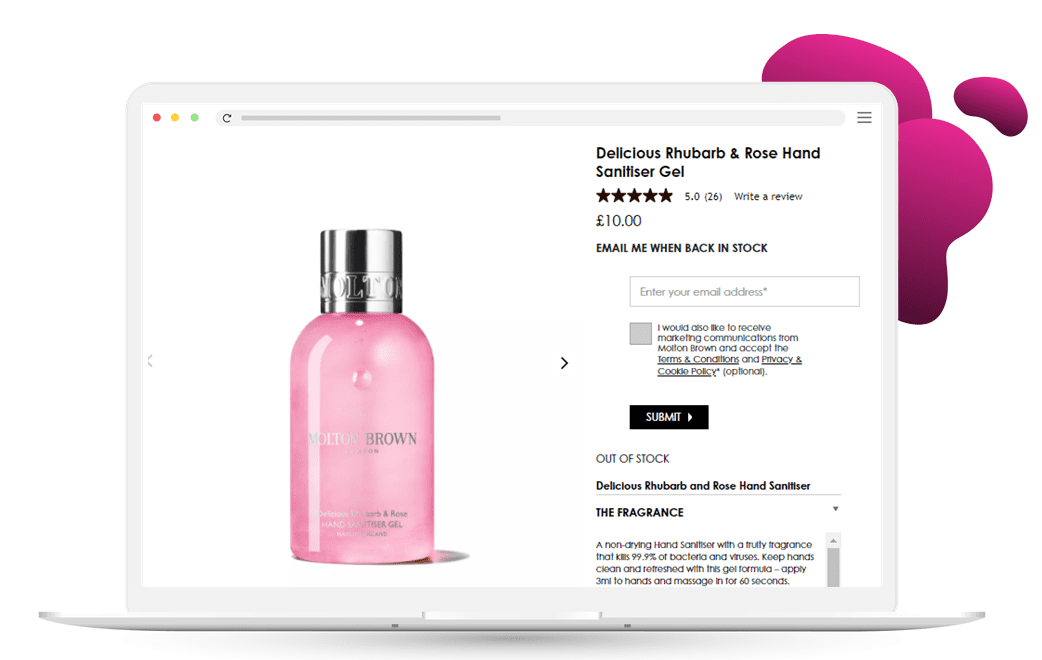
Source: moltonbrown.co.uk
Seasonal and location-based experiences
In the world of eCommerce, customer segmentation is crucial. Customers in sunny California are more likely to want beauty products such as sunscreen than customers in New York during December, for example. The latter might want something against chapped lips instead.
Here are some more ways of using the seasons and customer’s location to your advantage.
Store availability
Pavers makes use of this feature in the example below. It can further be used to show product availability in specific stores (or locations for those with no brick and mortar stores!), and you can even have it affect your product recommendations on your website.
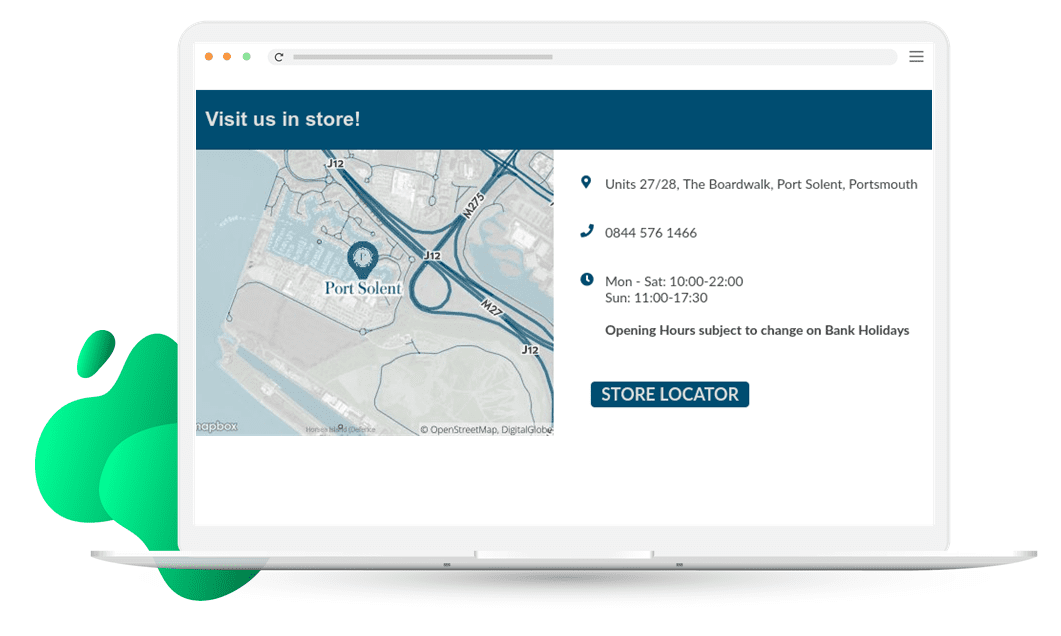
Source: pavers.co.uk
Seasonal content
Lloyds Pharmacy makes good use of seasonal content in their cart abandonment email below by including a clever pun (“Leaf the bugs behind”) – some good inspiration for your next email marketing campaign.
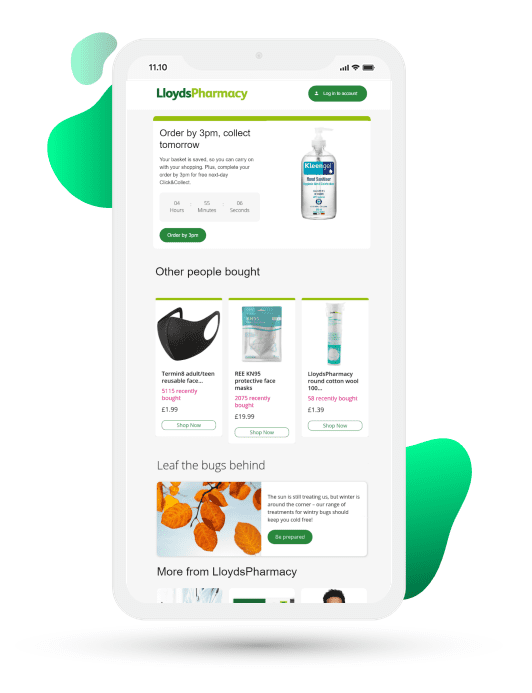
Source: Lloyds Pharmacy email
You don’t just have to stick to emails, though. Use the customer’s local weather forecast on your website and recommend them products based on whether it’s sunny, raining, hot, cold, etc.
For more of the discussion, watch the webinar on-demand here.
Disclaimer
This blog post is for informational purposes only. Fresh Relevance is not claiming to provide its services to the companies and brand owners referred to in the blog post.


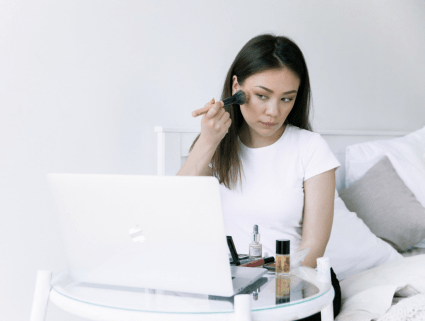
![Download The Ultimate Ecommerce CRO Lookbook [new visitors edition]](https://no-cache.hubspot.com/cta/default/483487/02bf11f5-ad9d-4c61-9893-bda882faa131.png)



